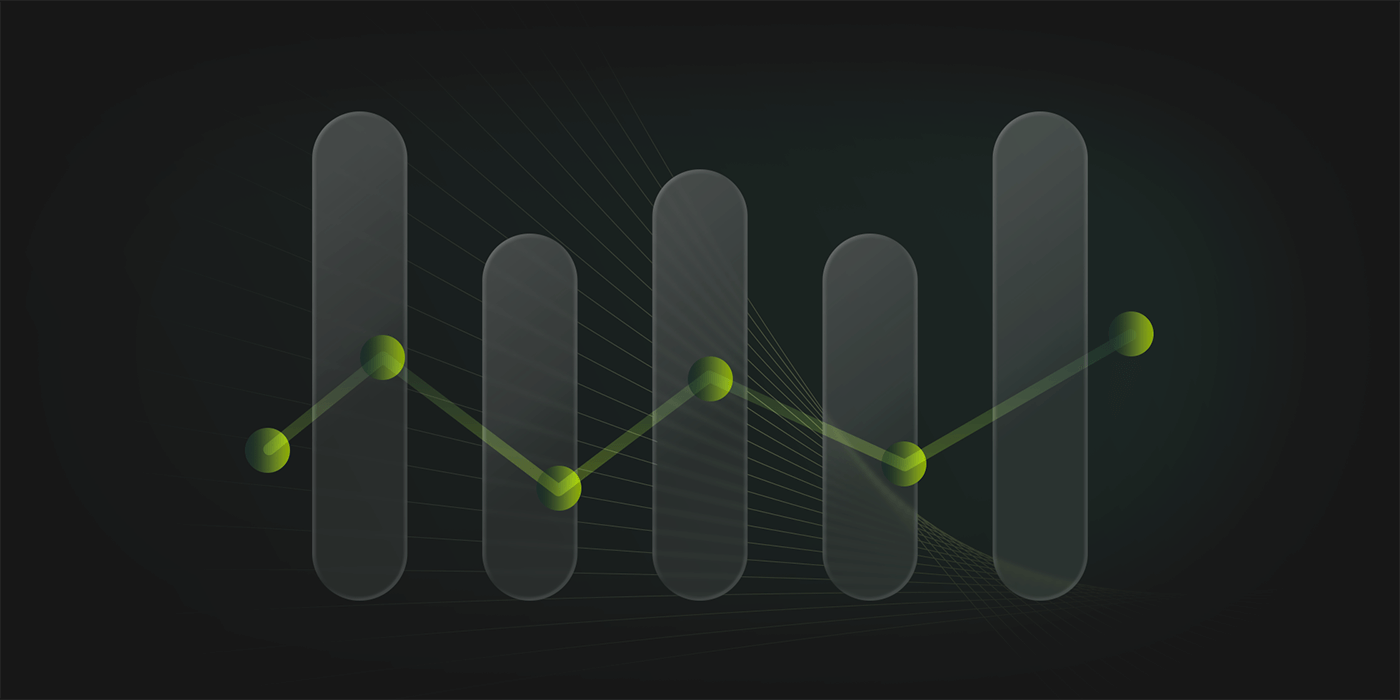Understand the key steps in the cyber risk analysis for your development project and the TARA procedure in detail. With this knowledge, you gain the ability to make informed decisions about risk management and the efficiency-oriented implementation of cybersecurity measures.
Assets
Assumptions
Impact Assessment
Threat Analysis
Controls
Attack Path Analysis
Risk Assessment

In the cybersecurity risk analysis and in the Threat Analysis and Risk Assessment methodology process, the assets represent the starting point for any subsequent protection requirements analysis and are therefore far more than just an arbitrary list of technical components.
Understood in depth, this means that not only a system to be developed, such as a physical control unit or data objects, is considered, but also the functional context, interactions within the system and their operational environment are taken into account.
It is therefore critical to precisely identify assets in terms of their relevance for the functional relationships in the system and their significance for safety-critical operations.
Incomplete, unclean or unstructured asset identification without targeted categorization and illumination of interactions leads to imprecise risk assessment. This becomes especially critical in view of the product lifecycle and the need for constant updating.
Particularly with cross-domain E/E architectures, it is often difficult to cleanly extract assets from functional dependencies, identify a need of protection and to create clarity across system boundaries.
Insufficient dovetailing of asset compilation with subsequent analysis work: Asset traceability with its connections to the given implementation context across development statuses and risk analysis iterations is often not supported, which destroys consistency.
Lack of integration with architecture models: Static asset documentation, detached from the system model and architecture, narrows the perspective and makes analysis work more difficult.
Particularly with cross-domain E/E architectures, it is often difficult to cleanly extract assets from functional dependencies, identify a need of protection and to create clarity across system boundaries.
Insufficient dovetailing of asset compilation with subsequent analysis work: Asset traceability with its connections to the given implementation context across development statuses and risk analysis iterations is often not supported, which destroys consistency.
Lack of integration with architecture models: Static asset documentation, detached from the system model and architecture, narrows the perspective and makes analysis work more difficult.
Assets
Assumptions
Impact Assessment
Threat Analysis
Controls
Attack Path Analysis
Risk Assessment

Assumptions are the cornerstone of any systematic cyberrisk analysis.
Systematically developed assumptions serve as a basis for argumentation in decision-making when the reality is still unknown or simply cannot (yet) be known and a decision must nevertheless be made in the course of a comprehensive analysis.
Nevertheless, they are often not specifically modelled.
System or impact assumptions (e.g. about technical system requirements, software states or network segmentation) must be systematically documented, tracked, and validated.
Especially in agile and distributed development environments, in which framework conditions and system-relevant circumstances change, outdated or implicit assumptions act as "silent weak points" for the effective risk analysis.
Assumptions that are not systematically tracked: Assumptions are often adopted completely unchanged from somewhere else, necessary changes in assumptions are often left out and jeopardize traceability as well as the analysis work itself.
Lack of support when entering assumptions: Assumptions for the risk analysis often have to be developed manually, and many tools do not offer any content-related support here, not even for the differentiated recording of assumptions.
The insufficient involvement of relevant stakeholders (with regard to different domains across organizational boundaries) leads to a lack of relevant input and ultimately to a lack of important perspectives and information in Assumptions.
Insufficient traceability in the handling of assumptions across different levels of the supply chain becomes problematic, especially once a component has been delivered.
Assumptions that are not systematically tracked: Assumptions are often adopted completely unchanged from somewhere else, necessary changes in assumptions are often left out and jeopardize traceability as well as the analysis work itself.
Lack of support when entering assumptions: Assumptions for the risk analysis often have to be developed manually, and many tools do not offer any content-related support here, not even for the differentiated recording of assumptions.
The insufficient involvement of relevant stakeholders (with regard to different domains across organizational boundaries) leads to a lack of relevant input and ultimately to a lack of important perspectives and information in Assumptions.
Insufficient traceability in the handling of assumptions across different levels of the supply chain becomes problematic, especially once a component has been delivered.
Assets
Assumptions
Impact Assessment
Threat Analysis
Controls
Attack Path Analysis
Risk Assessment

The Impact assessment involves developing the damage scenario of threats in a structured manner along the CIA characteristics of an asset.
This involves systematically evaluating the cybersecurity-relevant effects (safety, financial, operational and privacy) for different stakeholders.
Cybersecurity analysts and engineers are faced with the responsible task of evaluating damage scenarios using meaningful evaluation criteria: For example, safety and finance are two completely different domains with different importance to the respective stakeholders. However, the analysis should not be biased. Impact assessments need to be rigorous, objective and properly recorded.
Inadequate documentation of the assessment process: Without detailed documentation of the assessment principles in accordance with the specified system, the accuracy and comparability of the impact assessments can be distorted.
Insufficient automated tool support: The lack of integration with specific stakeholder interests or organization/project-specific categorizations makes it difficult to handle the assessments consistently.
The isolated consideration of threats from a purely technical perspective leads to the non-inclusion of other relevant perspectives, for example from the regulatory field
Inadequate documentation of the assessment process: Without detailed documentation of the assessment principles in accordance with the specified system, the accuracy and comparability of the impact assessments can be distorted.
Insufficient automated tool support: The lack of integration with specific stakeholder interests or organization/project-specific categorizations makes it difficult to handle the assessments consistently.
The isolated consideration of threats from a purely technical perspective leads to the non-inclusion of other relevant perspectives, for example from the regulatory field
Assets
Assumptions
Impact Assessment
Threat Analysis
Controls
Attack Path Analysis
Risk Assessment

The systematic identification of potential threats ("THREAT ANALYSIS") is at the heart of the cyber risk analysis process.
It is far more than just looking at a threat database.
The aim is to systematically link identified assets with damage scenarios and associated attack possibilities.
The aim is to compile a complete list that takes into account a dynamic threat landscape with up-to-date threat catalogues (HEAVENS (2.0), STRIDE, AutoISAC ATM etc.) as well as the increasingly complex context of the given architecture, operating modes and system behavior.
Modelling inconsistencies due to incorrect input: The mere duplication of content as part of threat analysis creates contrived artificial scenarios, while specific threats run the risk of being ignored.
Semantic vagueness in the development, for example by mixing attack vectors with threat scenarios, which undermines the overall stringency of the cyber risk analysis process.
Working in tool silos without sufficient system context and an automatically updated threat intelligence connection opens the door to serious incompleteness and incorrect assessments in risk evaluation.
Modelling inconsistencies due to incorrect input: The mere duplication of content as part of threat analysis creates contrived artificial scenarios, while specific threats run the risk of being ignored.
Semantic vagueness in the development, for example by mixing attack vectors with threat scenarios, which undermines the overall stringency of the cyber risk analysis process.
Working in tool silos without sufficient system context and an automatically updated threat intelligence connection opens the door to serious incompleteness and incorrect assessments in risk evaluation.
Assets
Assumptions
Impact Assessment
Threat Analysis
Controls
Attack Path Analysis
Risk Assessment

In the context of a conscientiously conducted cyber risk analysis/TARA, cybersecurity measures ("security controls") are not just a bouquet of protection options, but must always be precisely tailored to the risk contextualization that has been developed.
The challenge here is to be able to anchor controls in the system architecture in line with the security-by-design concept.
In addition to technical effectiveness, conformity with (regulatory) cybersecurity requirements and complex interactions with compatibility and functionality must also be properly considered when selecting controls.
Lack of proof of effectiveness and regular review: Controls are often used without validation of their effectiveness (and the associated implementation cost), a critical problem especially in a constantly changing threat landscape.
Mixing of categorizations and associated implementation levels: There is often a lack of clear separation between the different categories of security measures, for example in the distinction between technical and organizational controls.
Non-traceable implementation: In the context of cyber risk analysis, controls are not linked to requirements or architecture components, effectiveness and maturity levels are considered in isolation or completely ignored.
Lack of proof of effectiveness and regular review: Controls are often used without validation of their effectiveness (and the associated implementation cost), a critical problem especially in a constantly changing threat landscape.
Mixing of categorizations and associated implementation levels: There is often a lack of clear separation between the different categories of security measures, for example in the distinction between technical and organizational controls.
Non-traceable implementation: In the context of cyber risk analysis, controls are not linked to requirements or architecture components, effectiveness and maturity levels are considered in isolation or completely ignored.
Assets
Assumptions
Impact Assessment
Threat Analysis
Controls
Attack Path Analysis
Risk Assessment

Attack path analysis is a central knowledge process within cyber risk analysis/TARA: The systematic investigation of how an attacker can cause which threat scenario from which entry point via which steps.
This involves a well-founded analysis of what an attack path might look like and modeling this sequence in a comprehensible way and evaluating it consistently along the given parameters - despite the rapidly increasing complexity of more sophisticated development projects.
In the course of attack path analysis, certain neuralgic nodes or critical attack chains can be identified based on metrics - a fundamentally important contribution to cyber risk analysis.
There is a lack of comprehensive oversight of the information collected in the various parts of the analysis, which is a challenge for effective evaluation that should not be underestimated.
No dynamic path generation: Tools are rarely able to model continuous attack graphs, especially not in iterative and dynamic risk modelling; the simulation of scenarios is therefore not possible.
Ambiguities in the assessment system and subjectivity in the evaluation of attack steps lead to heterogeneous assessments, often deviating from how industry-specific standard specifications provide for cyber risk assessment.
Consideration of individual steps and lack of an overall view: Due to purely text-based forms of presentation or inadequate graphical visualization, attack path analysis often runs the risk of not being able to make critical observations sufficiently visible.
There is a lack of comprehensive oversight of the information collected in the various parts of the analysis, which is a challenge for effective evaluation that should not be underestimated.
No dynamic path generation: Tools are rarely able to model continuous attack graphs, especially not in iterative and dynamic risk modelling; the simulation of scenarios is therefore not possible.
Ambiguities in the assessment system and subjectivity in the evaluation of attack steps lead to heterogeneous assessments, often deviating from how industry-specific standard specifications provide for cyber risk assessment.
Consideration of individual steps and lack of an overall view: Due to purely text-based forms of presentation or inadequate graphical visualization, attack path analysis often runs the risk of not being able to make critical observations sufficiently visible.
Assets
Assumptions
Impact Assessment
Threat Analysis
Controls
Attack Path Analysis
Risk Assessment

The final and decisive step in cyber risk analysis is the RISK ASSESSMENT, in which the previously identified threats and their attack paths are combined with their potential impact and attackability in order to assess the risks.
This assessment is usually carried out using a combination of "impact" (extent of damage) and "feasibility" (feasibility of the attack), either qualitatively (e.g. high/medium/low) or quantitatively (e.g. with risk values or scoring models).
The aim is not to eliminate all risks, but to reduce them to an acceptable level - taking into account regulatory requirements, technical feasibility and economic viability.
Lack of coherence: The results of the risk assessment can often no longer be fully linked to the previous steps and findings of the risk analysis, as assessments are carried out independently of each other.
Static risk assessments: Dynamic changes, both in terms of the threat landscape and changes in the selection and maturity of security measures, are not dynamically transferred to the risk assessment. This is a problem for considerations along the entire lifecycle.
Exclusion of interactions: The assumptions, threat scenarios and security mechanisms developed in the previous steps of the analysis can influence or reinforce each other; ignoring such interrelationships can lead to inconsistent assessments.
The missing link to organizational policies is also a challenge that is often forgotten in risk assessment. If, for example, thresholds and recommended measures can be specified by the organization in a comprehensive and applicable way for a development project, this provides significantly better guidance on how to deal with risks.
Lack of coherence: The results of the risk assessment can often no longer be fully linked to the previous steps and findings of the risk analysis, as assessments are carried out independently of each other.
Static risk assessments: Dynamic changes, both in terms of the threat landscape and changes in the selection and maturity of security measures, are not dynamically transferred to the risk assessment. This is a problem for considerations along the entire lifecycle.
Exclusion of interactions: The assumptions, threat scenarios and security mechanisms developed in the previous steps of the analysis can influence or reinforce each other; ignoring such interrelationships can lead to inconsistent assessments.
The missing link to organizational policies is also a challenge that is often forgotten in risk assessment. If, for example, thresholds and recommended measures can be specified by the organization in a comprehensive and applicable way for a development project, this provides significantly better guidance on how to deal with risks.
Meet our experts who will discuss the TARA methodology with you in terms of methodology and application and present the CYMETRIS approach to you.
Adding {{itemName}} to cart
Added {{itemName}} to cart